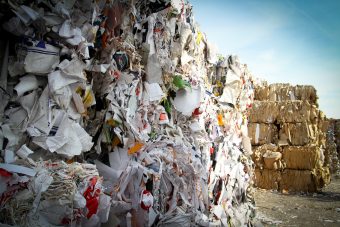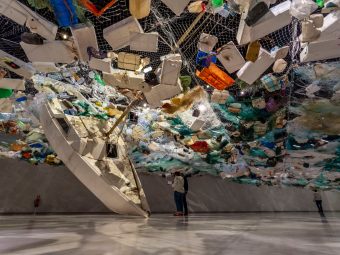
The main task for the future of waste management in Serbia is to debunk the waste management goals. So, where are we heading to as a society when it comes to this sector? As in all other fields, we simply follow global trends, and we try to give the meaning to different interests by using fashionable phrasing about the transition. As a result, we participate in public opinion about the waste treatment in Serbia being misshaped. At the same time, as the government administration is making an effort to provide development for 26 regions and implementation of Chapter 27, the expectations of our citizens and all the parties involved in waste management are being shaped by incomplete information in relation to few essential facts about waste management.
Before we set about demystifying the goals, it is necessary to bust the myth about current treatments (recycling and incineration). First of all, the primary separation, that is separated gathering of recyclable waste fraction, and secondary separation in separation facility are not recycling. These activities are the preparation of the material from waste for the process of recycling or reuse. This straw man argument is ever so present as much among the experts as it is with the broader audience, and it partakes in an already somewhat confusing situation in this sector. Second, and maybe more importantly, “recycling” won’t save the waste management system in Serbia nor will save the economy of our country. Why? That is because empirical data show that there isn’t an example of waste management in the world that generates profit without investment and operational costs (by default higher than incomes). In other words, waste management isn’t “Perpetuum mobile” as many would think. Waste route starting from collected materials to entering a recycling facility or becoming reused is technologically demanding and costly. Also, having increased the criteria of the required quality of material, its usable mass is decreased, and subsequently, the waste gathered this way isn’t completely usable as a resource or free for that matter. As this fact is valid for any country in the world, it goes for Serbia too. Third, it’s vital to stress that the key benefit for the society in terms of recycling materials is lowering greenhouse gas emissions in air, water and soil due to the reduction of primary resources exploitation, and not the profit and development!
It doesn’t mean whatsoever that Serbia shouldn’t recycle and undertake activities in this field. Quite the contrary. Still, it should be singled out that after many decades of passive watching by and brushing under the carpet the facts about the need and importance of system solutions in the waste management field, the rescue isn’t solely in recycling but in system approach. In all countries with developed recycling system, there are no landfills where you could dispose of your waste without any charge as it is the case in Serbia. All those countries developed their recycling industry having built sanitary landfills first where it is compulsory to pay for waste disposal. That was followed by raising the prices for waste disposal, which led directly to rerouting the waste to other waste treatments (recycling, biological treatments, incineration et). In order to move things in the right direction, we have to be realistic and accept the fact that neither public consciousness nor public opinion nor individual activities, which are noteworthy, are going to spark this process – but the information/ fact that if you recycle or incinerate waste you spend less money than in the case of its disposal. As long as any of us has an option not to pay at all for waste disposal, the development of recycling industry and waste management in Serbia is doomed to sheer populism and an attempt to create an image of fake waste management development.

Here is where the paradox comes forth. All the people who profess an idea that we shouldn’t dispose but exclusively recycle and incinerate waste, with an explanation that waste in the Western world doesn’t end at landfills, are actually failing the industry of waste treatment. However contrary it may seem, urgent construction and implementation of sanitary landfills in the Republic of Serbia are exactly the one and only thing that will instigate the development of the recycling industry. Serbia mustn’t democratize the choice of diverse options for waste disposal, but those options should be based on the system approach. Being one of the indispensable goals of the popular circular economy package, it is high time to introduce taxes and fees for waste disposal, which actually means establishing regional centres and sanitary landfills. We mustn’t forget that the circular economy package comes from the societies which have implemented long time ago fees for waste disposal, so the option of not having fee is rather inconceivable there. If we try to merely replicate specified requirements brushing under the carpet the importance of proper landfills, we are going to come to a dead-end, having implemented system which won’t have circular economy principles integrated, nor proper, technologically suitable sanitary landfills. Thus, it appears to be vital for the further development of this system what order and functional segments we are going to put our energy in. Finally, it mustn’t slip our mind that waste management is a compound system and all functional segments (generating, collecting, separation, treatment, disposal, etc.) are interwoven and mutually dependent.

Therefore it is required to show waste management goals realistically. They have nothing to do with recycling, disposing of, composting, nor incineration of waste. It is a fact that by building the facility for waste management, we achieve the quantity goals imposed by the EU. However, the real question now revolves around whether we treat waste to “use energy” from waste, or to prevent its negative effect on human health and environment which arises from bad waste management? The example of incineration shows that only 5 per cent of total energy consumption can be compensated by waste incineration on the national level. On the other hand, incineration helps prevent uncontrolled dispersion of mercury and cadmium flows on the national level (those are two highly toxic metals), whereas 40 to 50 per cent of those metals in national flows end up precisely in the waste management system.
So, the technologically advanced incinerators have a greater impact in the sector of human health protection than in energy production. The prime goals of waste management aren’t the treatments by themselves, or reusage and resource production, namely energy production. The prime goals are the protection of human health and environment, resources conservation and sustainable waste management, while the treatment, the EU waste treatment hierarchy, the production of recyclables and energy are solely the instruments for reaching the stated goals.
In other words, the only right way of development is the systematic one that aims to reach a higher level of fulfilment of real waste management goals – protection of health and environment. We need our own genuine ideas that correspond to our local conditions and not only sheer duplication of the solutions from other countries.
Nemanja Stanisavljević
This article was published in the new issue of the Energy portal Magazine on ENERGY EFFICIENCY, June 2018. – August 2019.
